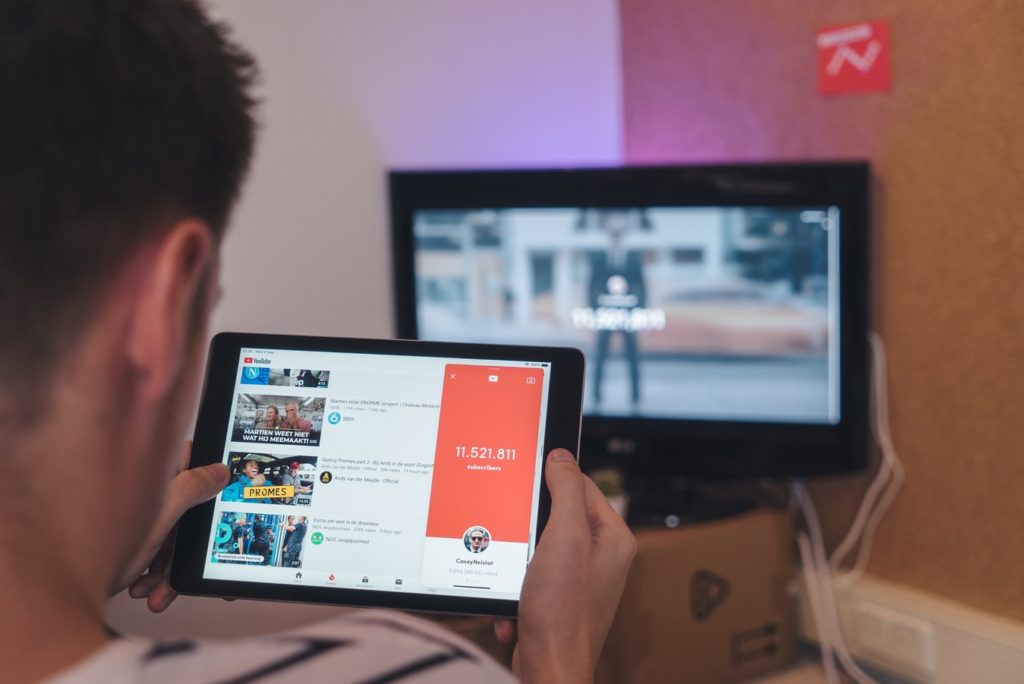3 Reasons Why YouTube Advertising Is More Effective Than TV Advertising
May 7th, 2020 by
Advertising on YouTube grows in popularity each year—especially in 2020, as viewers shift their attention online during the COVID-19 pandemic. Between 2014 and 2016, the number of small-and medium-sized businesses advertising on YouTube doubled (Source: YouTube Global Internal Data, Global, 2016). Traditional TV advertisers should reevaluate whether YouTube can produce results for their campaign.
Three reasons why YouTube advertising is more effective than TV advertising:
- Viewers pay more attention to YouTube than TV
- Precise targeting and quick adjustments improve campaign performance
- KPI measurement ensures an effective campaign
Viewers Pay More Attention to YouTube than TV
Studies help us infer that YouTube advertising is more cost-effective than TV advertising for brand recall, due to the attention being spent on each platform. According to a Google and Ipsos eye-tracking research study, paid YouTube mobile advertising is 84% more likely to receive viewers’ attention than TV advertising.
Viewers miss 55% of TV advertising time due to three distractions:
- multitasking
- switching channels
- fast-forwarding
YouTube’s own data shows that users who both see and hear ads experience higher brand awareness, higher ad recall, and higher consideration than those who only see or only hear ads. Typically, YouTube viewers are engaged with the platform because they select the videos they want to watch at that moment.
On YouTube, the chances could be higher to serve an ad with sight and sound to a fully engaged viewer. While there can be an option to “skip” YouTube ads, the advertiser does not pay for skipped ads, ensuring budget is not wasted on disinterested viewers.
Precise Targeting and Quick Adjustments Improve Campaign Performance
Both YouTube and TV advertising allow for demographic and psychographic targeting; however, YouTube has many more precise targeting options that can easily and continuously be tweaked to improve campaign performance.
See the YouTube targeting options below, pulled from Google’s documentation:
- Keyword contextual targeting: Use keywords that help match your ads to web content.
- Demographic: Reach people by age, gender, or parental status.
- Topics: Reach people based on certain topics.
- Affinity audiences: Select from interest-based groups to reach potential customers at scale and make them aware of your business. These audiences were built for businesses running a TV ad that want to extend the campaign to an online context at an efficient price.
- Custom affinity audiences: Advertisers can create audiences that are more tailored to their brands, compared with broad, TV-like audiences.
- In-market audiences: Find customers who are researching products or services and actively considering buying something like what you offer.
- Remarketing: Reach viewers based on their past interactions with your videos or YouTube channel.
All of the YouTube targeting options can be reevaluated and adjusted at any time to find the most cost-effective audience to reach your campaign’s goal.
For example, during prime-time hours of an average day in the U.S., more viewers ages 18-49 visit YouTube than any TV network. With this baseline knowledge, you can start your YouTube campaign by targeting ages 18-49. As the campaign collects data, you can review your KPIs at the targeting level and decide to pause or add targeting options.
If your brand speaks to an older demographic, you may want to consider running TV advertising during prime-time hours. However, with the value YouTube provides, consider running a YouTube campaign complementary to a traditional one.
KPI Measurement Ensures an Effective Campaign
All digital advertising allows you to measure the success of your campaign by setting goals, or target KPIs (key performance indicators).
Setting target KPIs—using metrics such as cost per conversion and click-through rate—allows us to take a step back from the day-to-day campaign analysis and optimizations to assess the big picture data. In doing so, we determine whether we’re being effective with optimizations and meeting campaign goals.
Contrary to assessing the success of a TV ad campaign, digital advertising performance can be associated with very specific parts of the campaign. If the campaign is not meeting goals, you can single out the KPI metrics in need of attention and make improvements. This ability allows you to adjust specific components, such as a particular ad’s creative message or a single target audience.
The data you cultivate through YouTube advertising is much more specific, actionable, and accessible than TV advertising. Having an abundance of data to make campaign adjustments improves the metrics and sets you up to meet campaign goals and ensure a successful campaign.
Test A YouTube Campaign Now
Now is a great time to test a YouTube advertising campaign, as plenty of eyes are shifted online during the COVID-19 pandemic. TV advertising is a great platform as part of a robust 360-campaign strategy, but as digital advertisers we prefer full control over our campaigns to guarantee measurable success.
Need advice on how to set up a YouTube video campaign in Google? Contact one of our strategists today. You may also want to check out our top 6 marketing planning activities during COVID-19 to get started.


